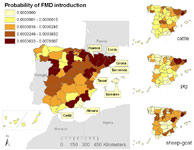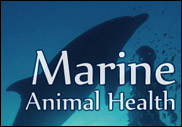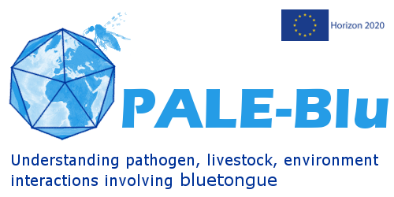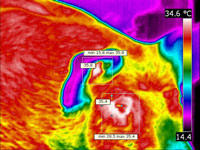Main research lines
ASF: Epidemiology, design of new diagnostic methods and vaccine development

One of our lines of research consists of developing different epidemiological models on the risks of entry of different infectious diseases in several countries in Europe, Asia and America, identifying the critical points of each disease and modelling its potential spread that allow the early detection of these diseases and the creation of contingency programs. The diseases under study are those classified in the mandatory declaration list of the World Organization for Animal Health (OIE). To date we have made models for Bluetongue, Foot and Mouth Disease, African Swine Fever (ASF), Classical Swine Fever and Avian Influenza.
We also developed molecular diagnostic methods based on metagenomics and multiple and quantitative PCR for various infectious animal diseases, in order to be able to carry out molecular epidemiology studies and develop techniques to differentiate vaccinated from infected animals.
We are currently involved in several research projects on African Swine Fever (see projects section), the most important of which is VACDIVA (www.vacdiva.eu). The main objective of VACDIVA is to solve the African swine fever (ASF) problem in Europe and affected countries, by developing three safe and effective vaccines for domestic pigs and wild boars, their companion DIVA tests and effective tools for control and eradication strategies in Europe.
More information in the section dedicated to ASF
Marine Animal Health

The main objectives of the Marine Animal Health project are the evaluation, monitoring and improving of the health of the marine fauna of the Mediterranean Sea, contributing to the conservation of the marine ecosystem and the prevention of possible massive stranding. Thus, we participate in necropsies, we store samples in our tissue bank, we carry out molecular detection of different infectious agents and we carry out epidemiological studies.
For this, the stranded animals are studied on the coast of the Valencian Community, thanks to a collaboration agreement between our research group and the Oceanografic Foundation.
More information in the section dedicated to Marine Animal Health
Bluetongue

Our group participates in the PALE-Blu Project (www.paleblu.eu) that brings together leading laboratories in Europe with establish track records working on epidemiology, modelling, vaccinology, diagnostic systems, vector biology, pathogenesis, transmission and control of Bluetongue virus (BTV) outbreaks, together with established institutes in several other countries that represent a potential ‘source’ of the BTV strains that continue to invade Europe.
The PALE-Blu project dissects the interplay between the Bluetongue virus, its ruminant hosts, insect vectors and the environment. The project partners utilises new and existing methods to explore the molecular epidemiology of BTV strains circulating in Europe and related source-regions (including Northern, Western and sub-Saharan Africa, the Middle East and Turkey)
More information in the section dedicated to Bluetongue
New technologies for early detection of diseases
Video camera surveillance systems represent a new line of diagnosis based on the detection and establishment of movement patterns.
The VIGIASAN Operational Group Innovation Project's main objective is to develop technologies and innovations (software and hardware) based on these surveillance systems by video cameras for pigs and cattle, extrapolated to other species. The aim is to implement data collection methodologies in a population in a systematic and continuous way, for their analysis and interpretation, as well as to identify physiological and behavioral (movement) patterns. The objective is to monitor changes in parameters remotely in real time that allow generating alarms and early detection of animal health or welfare problems.
More information in the section dedicated to the VIGIASAN project
 The Animal Thermografy line was developed to be able to detect feverish conditions at an early stage without the need for any manipulation of the animal, as well as other inflammatory and tumor processes. It is a non-invasive system that can be performed remotely, is adapted for domestic animals and is ideal for wild animals, both terrestrial and aquatic.
The Animal Thermografy line was developed to be able to detect feverish conditions at an early stage without the need for any manipulation of the animal, as well as other inflammatory and tumor processes. It is a non-invasive system that can be performed remotely, is adapted for domestic animals and is ideal for wild animals, both terrestrial and aquatic.
More info on Animal Thermography website


